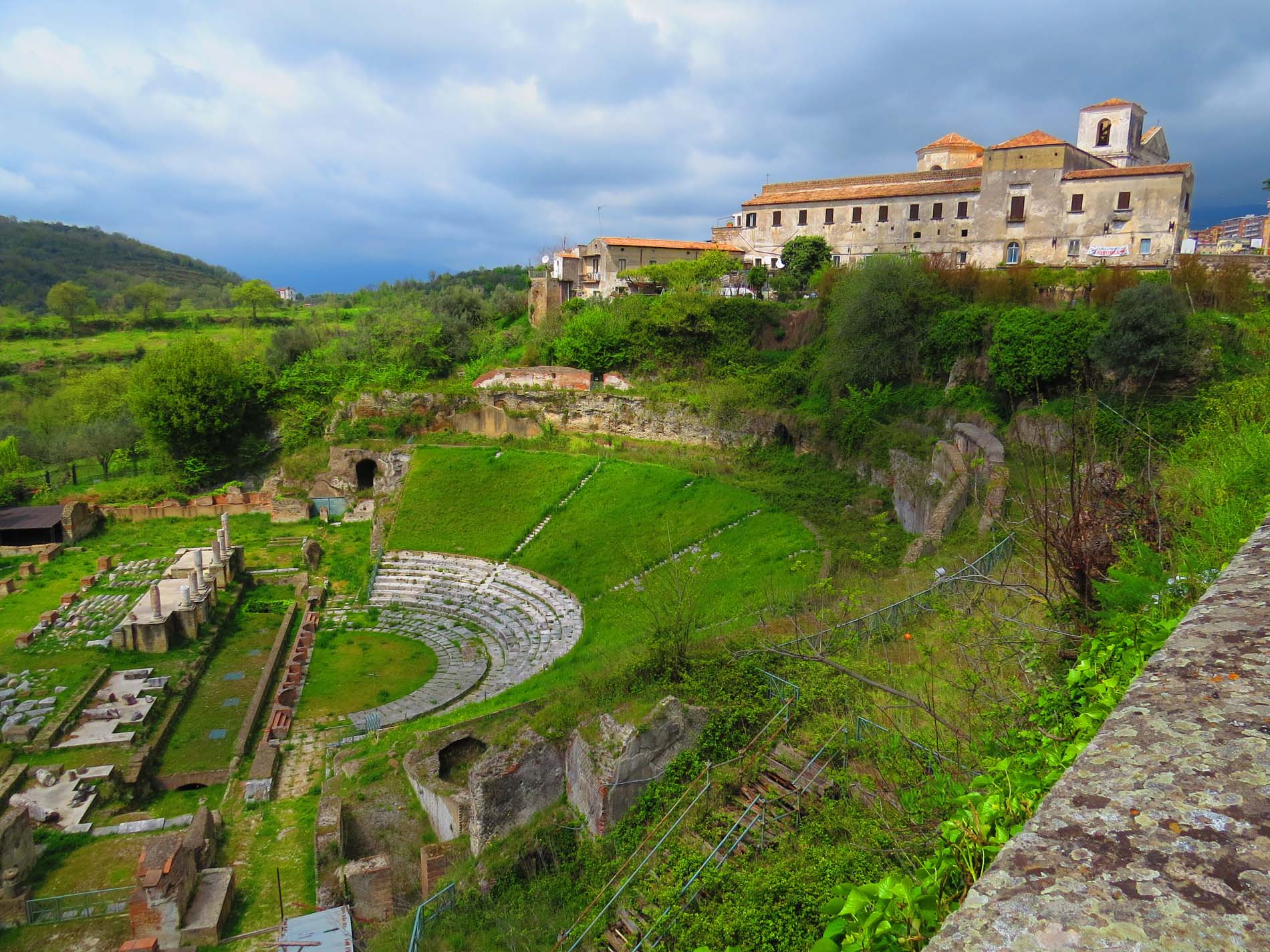We are in the province of Caserta, in Sessa Aurunca, the last town in the Campania region, on the border with Lazio. This town stands on the slopes of the Roccamonfina volcano and boasts a very happy geographical position, a few steps from the sea and the mountains, but above all almost halfway between two important centers such as Naples and Rome.
Its rich and varied territory boasts a series of naturalistic beauties and respectable food and wine and artisan products.
Over time the city has been enriched with numerous churches, convents and monasteries, preserved almost intact still today.
It was inhabited from the 8th century BC by the people of the Aurunci, it then became a Roman colony in 313 BC, following the conquest of the territory by Rome. In the mid-thirteenth century it became the duchy of the Marzano family, until the conspiracy of the barons, in which the last duke Marino was personally involved. In 1503 the territory was donated to Consalvo de Cordoba and in 1799 Sessa became a municipality.

There are several monuments that we can find inside the city:
The Roman Theater: brought to light recently, with three excavation campaigns between 1998 and 2006, the Theater is from the Augustan era, although it was subsequently enlarged and renovated in the second century at the behest of Matidia Minore, a very important female figure for the territory, which made it one of the most beautiful in the area.
The Cathedral of St. Peter and Paul: of apostolic origin, dedicated precisely to Peter and Paul, dates back to 1103 and was built with material from the Roman theater and the ancient Roman forum. The interior of the structure is full of surprises and elements of considerable importance, such as the painting by Luca Giordano entitled “Communion between the Apostles” which is located in the Chapel of SS. Sacramento, or the enchanting opus alexandrinum floor that occupies the central nave, or the precious 13th century “ambone”.
Hercules Fountain: “Hercules choking the lion Nemeo” is a work that was created by the sculptor Angelo Solari in 1825, at the request of the Municipality, to celebrate the completion of the public aqueduct that brought water into the city .
The Ducal Castle: we are obviously in the upper part of the city, from where it was possible to have a complete view of the surrounding area. The first nucleus of the structure is from the Lombard era, but over time it has undergone numerous changes before we get to take on the aspect we can admire today. Currently inside the castle there is an “Exhibition Hall” containing some finds from the Roman Theater, including the beautiful statue representing Matidia Minore, unique in its kind, made with a splendid combination of gray and white marble.


